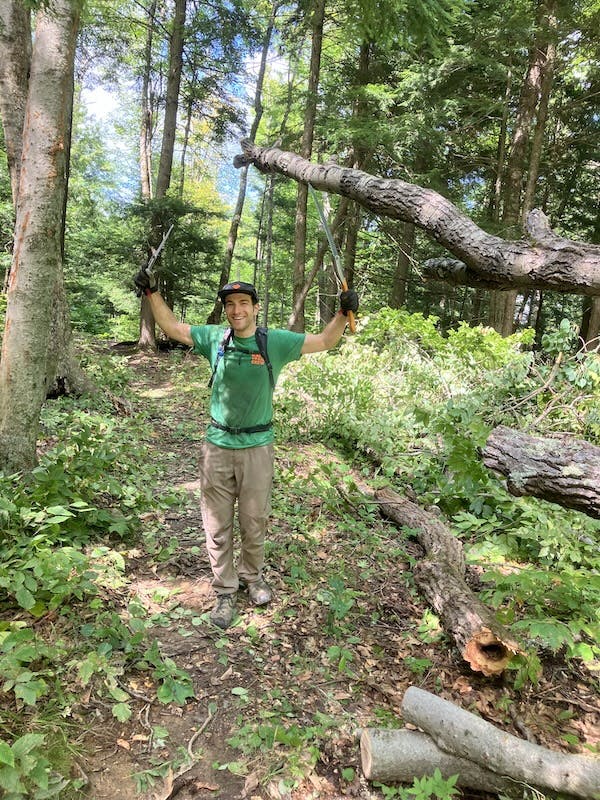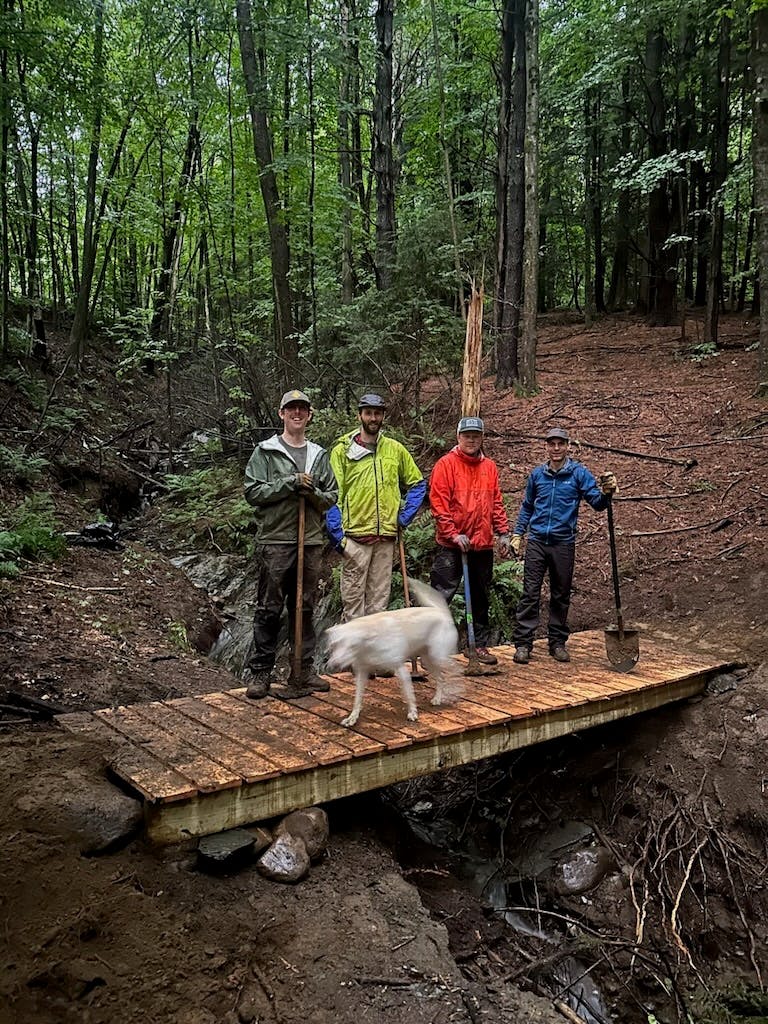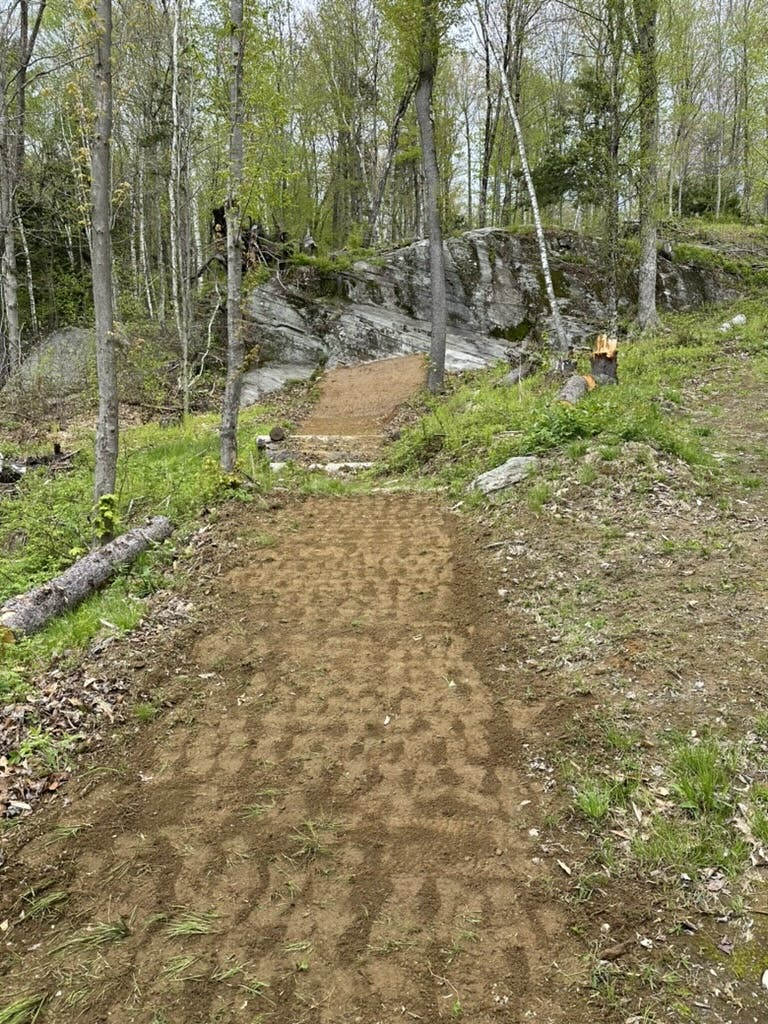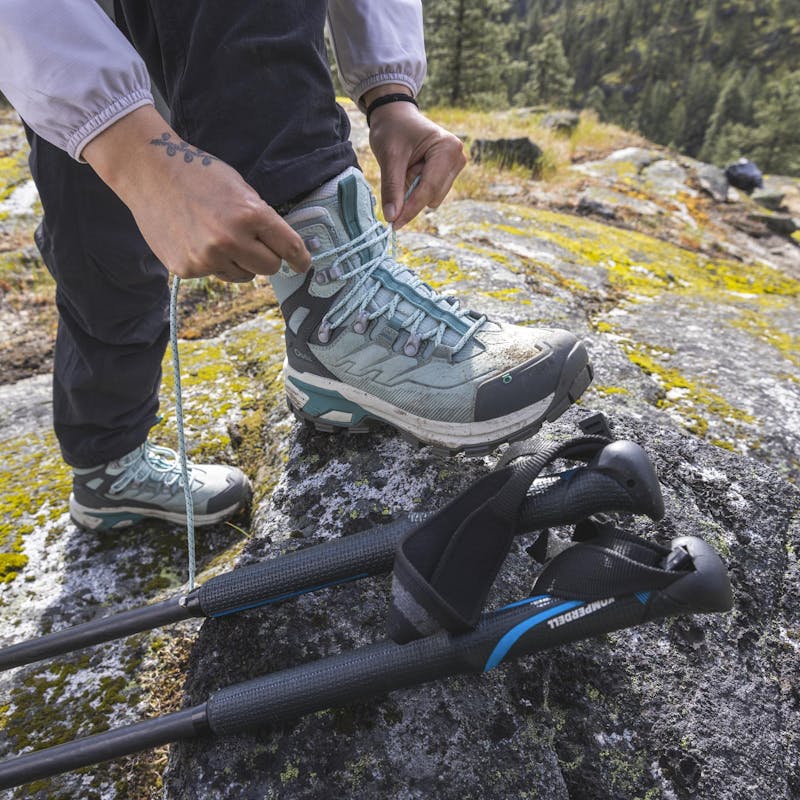If you love hiking rugged trails or spending time on your mountain bike, then getting involved with trail organizations and learning about trail stewardship can be a fulfilling way to give back. Trail stewardship ensures that our trails remain accessible, sustainable, and well-maintained for all outdoor enthusiasts. Whether you're new to the concept or ready to dive in, here’s a few tips to help get involved and make a difference.
Trail Stewardship - It Matters
Trails require regular maintenance to remain safe, hikeable, and rideable. Proper stewardship prevents erosion, ensures sustainable trail building techniques, and keeps trails open for the community. Without dedicated volunteers and organizations, many trails would become unsafe or face closure due to environmental damage or lack of maintenance.

Bec Wojtecki, Executive Director at Richmond Mountain Trails out of Richmond, Vermont, expresses the importance of trail building stewardship within their organization, “While building trails is fun and exciting, trail stewardship is what ensures the future of our recreational landscape. By actively caring for the trails, Richmond Mountain Trails volunteers keep them in good condition, promote safety and climate resilience, and foster a sense of pride and community. Every season we rely on volunteers to repair storm damage, clear trails, maintain sightlines, fix bridges, and work on rock armoring and drainage to improve resilience. The dedication of volunteers and allocation of resources to stewardship ensures that these valuable resources remain accessible for future generations trail users.”
Ways to Get Involved
1. Join a Local Trail Organization
Many communities have trail organizations dedicated to maintaining and advocating for local trails. Groups like the Green Mountain Club (near us), International Mountain Bicycling Association (IMBA), local MTB clubs, and regional advocacy groups work to protect and improve trail systems. Joining these organizations often comes with opportunities for hands-on involvement, trail building workshops, and advocacy work.

2. Volunteer for Trail Maintenance
Trail organizations often host trail workdays where volunteers can help with tasks like clearing fallen debris, reinforcing berms, repairing erosion damage, and building new features like jumps or switchbacks. No prior experience is needed, and it’s a great way to meet fellow hikers, riders, and adventurists while learning essential trail-building skills.
3. Be Brave and Try Something New
If you’ve never built or maintained a trail before, it can feel intimidating. However, most trail organizations offer guidance and training, and experienced volunteers are always willing to help newcomers. Taking that first step outside of your comfort zone can be incredibly rewarding. You’ll gain confidence, learn new skills, and see firsthand how your efforts make a difference on the trails you hike and ride. Every expert trail builder started as a beginner!

4. Master the Small but Essential Jobs
Not every maintenance task involves building an entirely new trail. In fact, some of the most important jobs involve raking debris, clearing drainage areas, removing fallen branches, and fixing small erosion issues. These tasks are crucial for keeping trails in top shape and preventing larger, more expensive repairs down the road. Becoming proficient in these small but essential jobs will make you an invaluable asset to any trail organization.
5. Take Initiative—Clean Up Whenever You Can
You don’t have to wait for an official workday to help keep trails in great shape. If you have a rake, a pair of gloves, and some time, you can make a difference on your own. Clearing debris, fixing small drainage issues, or moving fallen branches off the trail are simple but impactful ways to contribute. Often, the best-maintained trails are the ones that receive the most volunteer love from hikers and riders who take pride in their local trails. Every little bit helps, and a well-maintained trail benefits everyone.

6. Educate Yourself on Sustainable Trail Use and Etiquette
Being a responsible trail user starts with understanding and following sustainable practices. Whether you're hiking, biking, or horseback riding, staying on designated trails, respecting closures, and minimizing impact help protect natural spaces. All users should be mindful of yielding to each other—hikers yield to equestrians, mountain bikers yield to both hikers and horses, and equestrians communicate their needs to others on the trail. Avoiding wet trails prevents erosion, and sharing the path courteously ensures a positive experience for all users. Learning and practicing these principles helps maintain access and preserves trails for future generations.
7. Advocate for Trail Access
Beyond hands-on work, you can support the mountain biking community by advocating for more access to trails, sustainable trail design, and proper funding. Writing to local representatives, participating in land-use discussions, and supporting policies all play a role in keeping trails open and accessible.
In Vermont, VMBA (Vermont Mountain Bike Association) is a large part of why getting outdoors is so easy and enjoyable for us. As stated on their website, “VMBA serves as a collective voice for mountain bike advocacy in Vermont. Guided by our mission to ensure the sustainable future of trail riding in our State, we pursue a set of goals that seek to secure trail access, reduce the administrative burden on our Chapters, and support the development of amazing trail networks state-wide. Mountain biking has come a long way since VMBA was founded in 1997, and our growth as well as the trail-building standards we follow and relationships we have developed have enabled us to become a leader in outdoor recreation advocacy in Vermont.”
Benefits of Getting Involved
Getting involved with trail organizations and stewardship not only benefits the environment but also enhances your outdoor experience. You’ll gain trail-building skills, make connections within the community, and take pride in knowing that you’re helping to create and maintain awesome trails for future enthusiasts.

Pro Tip from Phil and Hailey:
Summer of 2023 and 2024 major flooding events happened all over the East coast. From Maine to North Carolina trails, roads, and communities were washed away. In our little pocket of Vermont, focusing on erosion mitigation while building new trails or updating existing trails was key to preventing more serious erosion. While it may not seem fun, going on a hike during a rain storm and observing how the water interacts with the trail is the best tool in learning how to build a trail to sustain all types of weather.






